When we first heard about the Intel Xeon W-2295 it sounded like an exciting part. For $1,333 this is a high-frequency 18-core part that would fall between the Intel Xeon E-2288G and Intel Xeon W-3275 for Xeon Workstations. These Xeon W parts also make for interesting options in the single-socket server market, and the Xeon W-2295 is no exception. With Intel and Puget Systems letting us borrow a solution to test the LGA2066 Xeon, we jumped at the opportunity.
Key stats for the Intel Xeon W-2295: 18 cores / 36 threads with a 3.0GHz base clock and 4.6GHz turbo boost. There is 24.75MB of onboard cache. The CPU features a 165W TDP. These are $1333 list price parts. Here is an Intel Ark link for your reference.
Here is what the lscpu output looks like for an Intel Xeon W-2295:
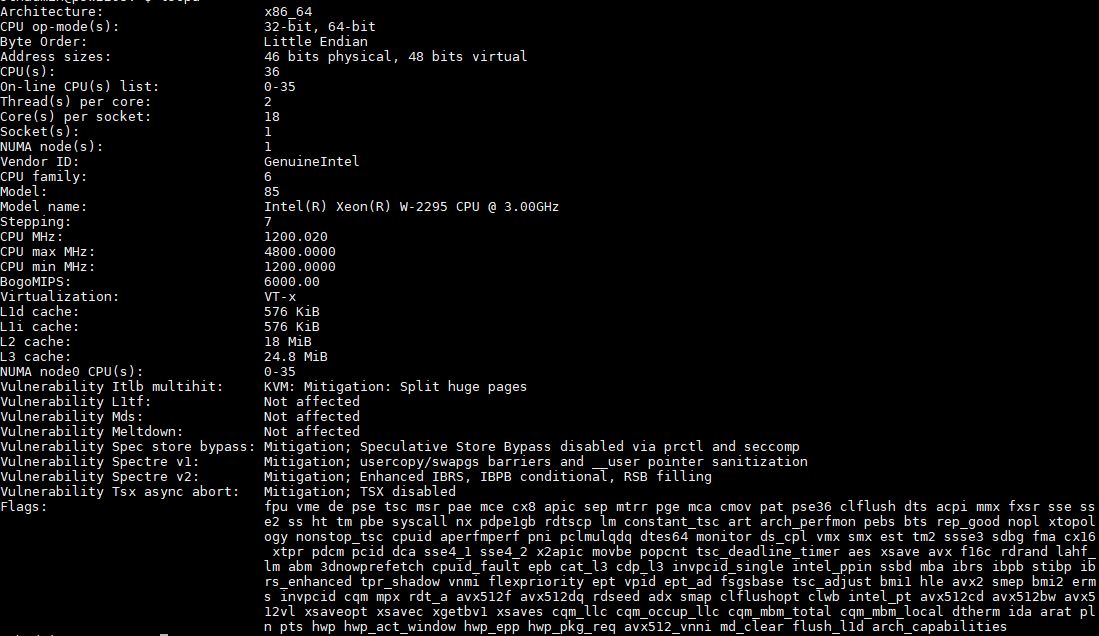
The chip itself is a LGA2066 package which means uses a similar packaging size and socket size to the LGA2011 socket that was used from the Xeon E5-2600 V1-V4 generations. As such we get features such as quad-channel memory support. An update with the newer chips is that we also get support for up to 48 PCIe 3.0 lanes with the platform.
Based on the Intel 14nm process, this is a monolithic die design. That means we have a single NUMA node where all memory and PCIe devices are attached.
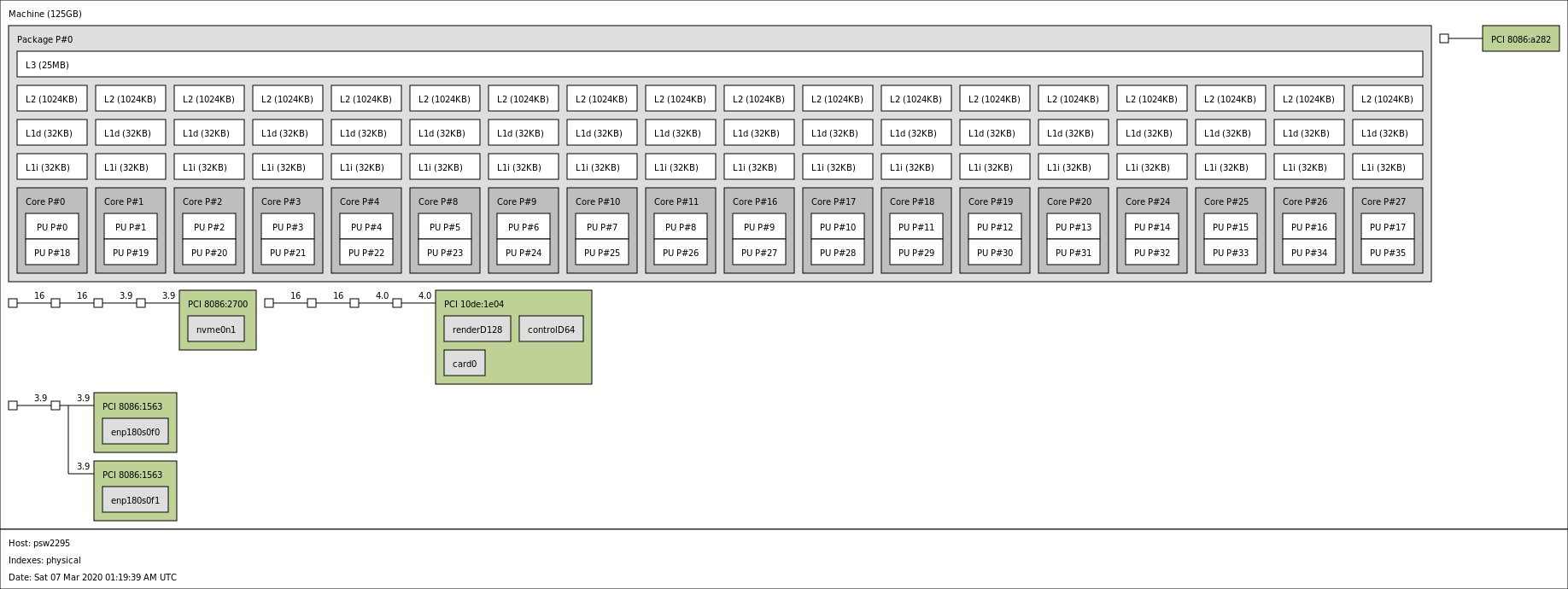
In our benchmarks and review piece, we are going to take a look at a few new items. Namely, we are going to see where the Intel Xeon W-2295 falls in a competitive landscape that includes both Intel and AMD solutions.
Intel Xeon W-2295 Test Configuration
For our Intel Xeon W-2295 review, we are using the following configuration:
- CPU: Intel Xeon W-2295
- Motherboard: Asus WS C422 SAGE/10G
- Ram: Crucial 128GB DDR4-2666 REG ECC (4x32GB)
- Video Card: PNY GeForce RTX 2080 TI 11GB Blower Fan
- Chassis: Fractal Design Define R6 USB-C Black
- Power Supply: EVGA SuperNOVA 1000W P2 Power Supply
- CPU Cooling: Corsair Hydro Series H60 CPU Cooler (Rev. 3)
- Primary Storage: Intel Optane 905 1TB NVMe AIC SSD
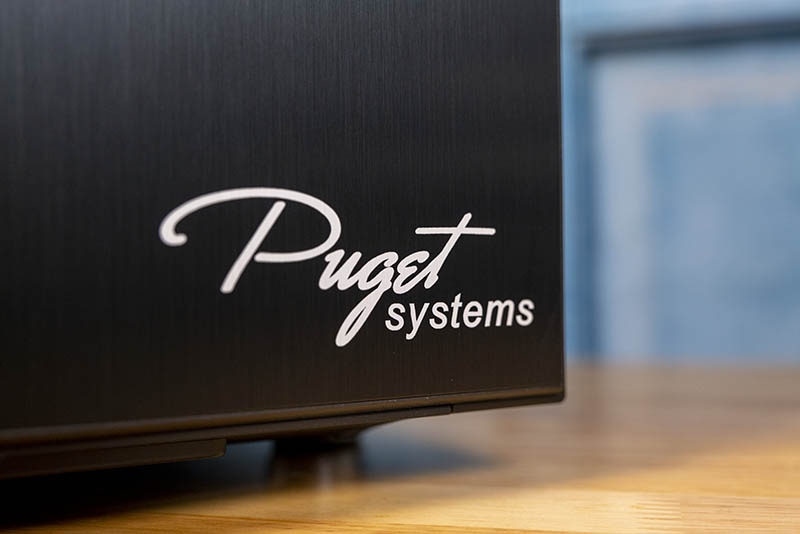
The system itself is well designed and remarkably quiet given the fact it has an 18-core Xeon CPU that can hit 5.0GHz underneath. One change we would likely make from this configuration is to use a different data drive. While STH loves Intel Optane, it is likely overkill to have a 960GB SSD here as a boot and application device.
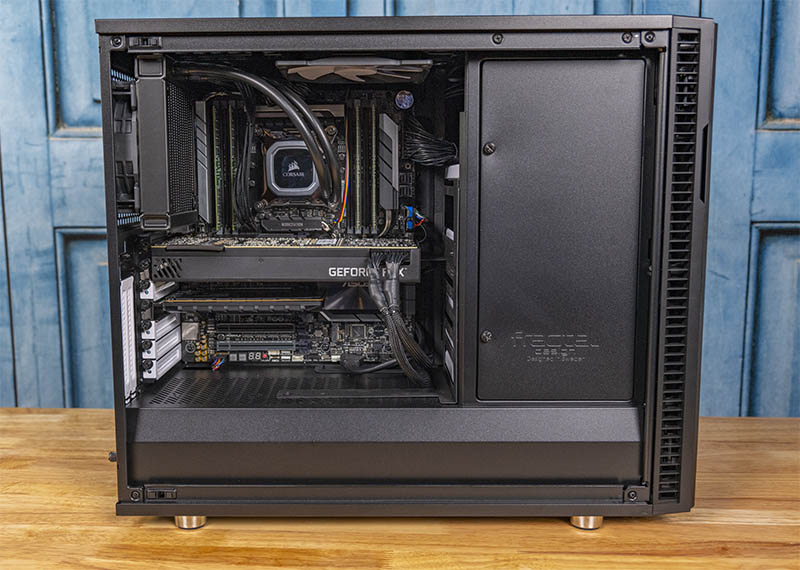
We had the opportunity to see this custom system be built around the Xeon W-2295 and that included some of the fun bespoke features such as thermal imaging the system at idle and load during its stress testing.
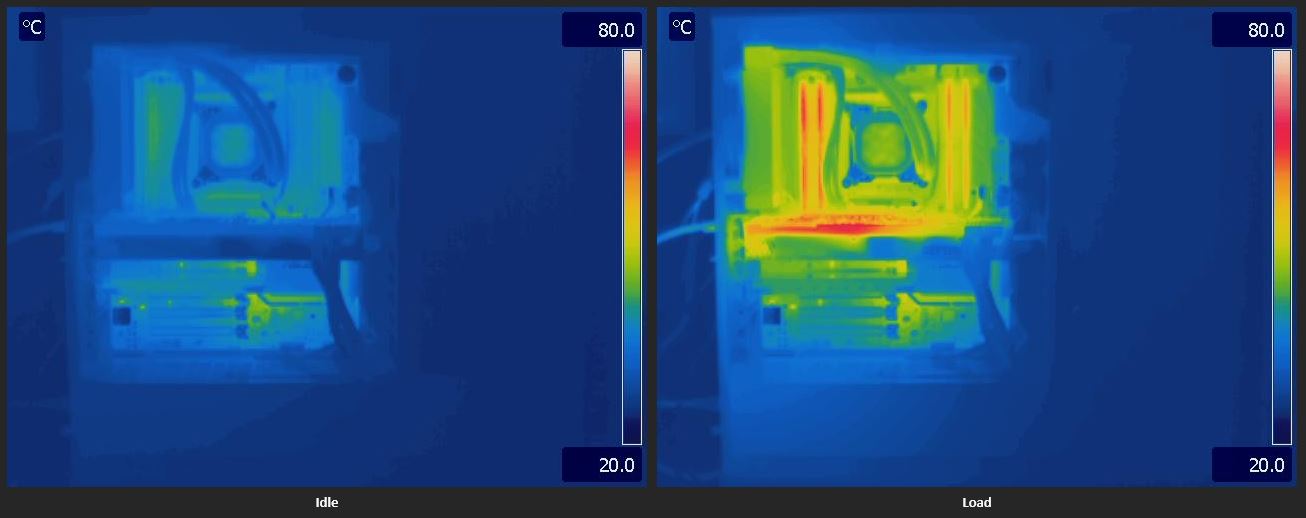
The overall build quality of the Puget Systems workstation was excellent and we will have more on that on STH.
Next, let us look at our performance benchmarks before getting to market positioning and our final words.

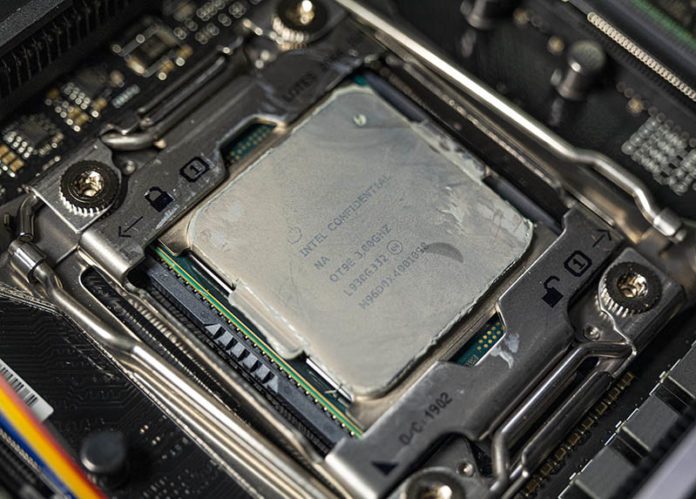



Nice setup.
I would have been even nicer when the 3950x with a TDP of 105 Watt and the 3960x in ECO-MODE (~ 125 Watt and a performance decrease ~ 25%), would have been mentioned. It’s good to see that the competition between Intel and AMD brings us a lot, let’s hope we will see the same competition in the near future between NVidia and AMD (and all the ARM, RISC-V, etc.. processors).
Good busy times for STH and the community.
John, thanks a lot for this article. Was looking forward to be reading it for weeks already. Anyway, let me ask one question. You mention “For our 2nd Generation Intel Xeon Scalable CPU quad-socket reviews, we are using the following configuration:” — which looks like a template edit from some other article, which actually lead me to the question (if you have used different article as a basis): are you 100% sure about your power figures? I mean 131W OS idle is way much than what I would expect from the system. For example look into William’s article about i9-10980xe https://www.servethehome.com/intel-core-i9-10980xe-review-18-cores-of-pure-intel/6/ — idle power consumption is 71W! That’s something I would also expect from W-2295. So your 131W really surprises me a lot. Thanks for checking!
Also Misha’s comment brings up a good idea for a potential article – looking at the configurable TDP options of the threadripper chips (Should be noted that the IO die consumes a huge amount of power and this goes up as you use higher speed memory, so as you configure the TDP down, the all-core cpu performance discrepancy will rise.
Your conclusion is spot on. Intel needs this to be a $999 price part.
I don’t agree that the 3950X is a real competitor. It doesn’t have as many PCIe lanes. Gen4 is nice, but having more connectivity matters. I would’ve liked to have seen it in the review too, but I understand why it’s not there.
KarelG – That is what the number was. I agree it is higher but the test configurations are different so what can I say? We have a range of values here just to give some sense. At $0.20kWh power that’s $100 a year difference. I will gladly pay $100 a year more for components that are virtually silent. These are not sub $1000 systems so a higher idle load does not turn me off. I know that is simplistic, but the system itself was really nice even if idle power was higher than other configurations.
@Nate77
Same is valid for the Threadripper and the EPYC, they have more or way more PCIe lanes with way more bandwidth.
When looking at the test setup.
we are using the following configuration:
CPU: Intel Xeon W-2295
Motherboard: Asus WS C422 SAGE/10G
Ram: Crucial 128GB DDR4-2666 REG ECC (4x32GB)
Video Card: PNY GeForce RTX 2080 TI 11GB Blower Fan
Chassis: Fractal Design Define R6 USB-C Black
Power Supply: EVGA SuperNOVA 1000W P2 Power Supply
CPU Cooling: Corsair Hydro Series H60 CPU Cooler (Rev. 3)
It’s no problem to make a similar configuration with Ryzen, Threadripper or EPYC. STH has made enough side notes about the amount of memory, PCIe-lanes, etc.. and what you need when you want to do something with your setup.
John — thanks for confirmation. No offense, I’m just curious what the heck was that power hungry in the system in idle load since well, I cannot help, but still think CPU is not the culprit here.
Otherwise system was excellent and if I read your graphs right then even less consuming than W-2123 or a bit higher up to the 1950x territory and this is nice (graphs from Williams’ i9-10980xe article).
BTW: you have not mentioned drive(s) used in the configuration in the configuration paragraph, but I guess they don’t make that much difference…
Can you even buy the 10980xe anywhere? I see it listed for far higher prices than MSRP, comparable to this xeon, and it’s not even in stock then.
The product exists almost purely on Paper to make the Lineup look better to the shareholders.
If this xeon is actually available, that’s a huge step up for intel products.
Hi!i heard about the Intel xeon w-2295.it uses the lga socket2066. Mye pc has a lga socket2066. Can i upgrade to this processor?i have a I9-9900x processor.
Hi Farshad, you can upgrade to the 2295, however if you don’t absolutely need ECC, it would be wiser to wait until the 10980xe is back in stock, and if you don’t need AVX-512, AMD would be the smarter choice since they will provide an upgrade path over the next few years.
Great job, STH!
I do appreciate the work you are doing!
You are becoming one of my favorite site.
May I ask a wish?
I work in simulation field (FEA/CFD).
REQUEST
1) Could you run also the SPECworkstation benchmark as you did for 3960x/3970x/10980xe?
In particular, the Product Development.
2) Could you perform the benchmarks also with AVX-512 on? Just to see where this kind of instructions can influence the performance. Sometimes, Intel CPUs outperform AMD ones, even they have less core… Really interested in which cases (while waiting for Zen3 and their AVX-512 implementation).
Thanks
The missing link is the Linpack benchmarks – I can’t buy a Xeon workstation without seen the GFLOPS it can deliver.
BTW the W-2295 would have scored much closer to the 10980XE if 2933MT/s memory had been used. I discovered that it will continue to run at 2933MT/s with 2 DIMMs per channel if you use DDR4-3200R automatically derating to DDR4-2933R when loaded with 2DPC. The higher spec memory can then be leveraged at full-speed on a future W-3300 upgrade running 8 memory channels down the road.